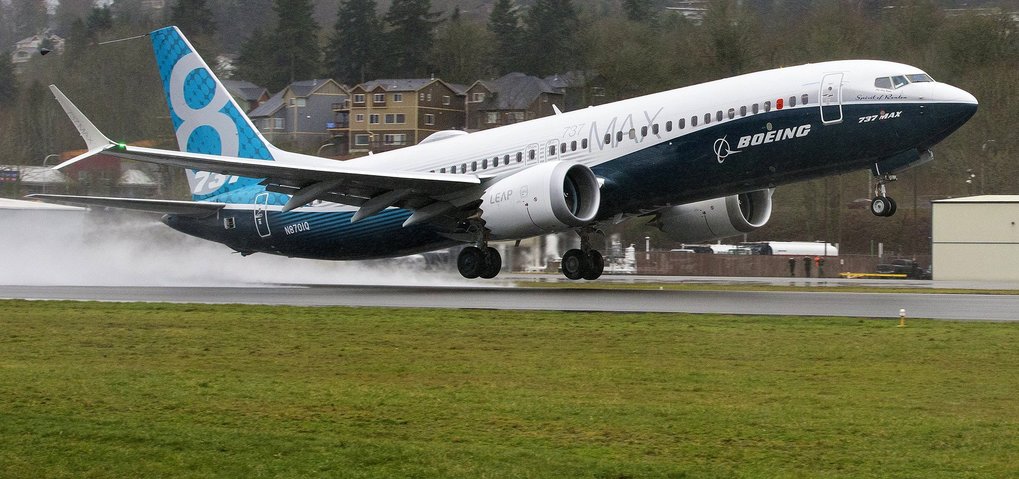Despite a tragic start, the 737Max is an indispensable partner in the quest for sustainable aviation

Michael Wakabi
The global grounding of Boeing’s 737 Max fleet by US regulators last week once again brings into focus the financial and reputational risk aircraft manufacturers assume when they try to stretch the technology envelope, often at the prompting of a rapidly expanding air travel industry and an increasingly eco-sensitive world.
Reports coming out of Seattle indicate that the two Max crashes that came just five months apart, could be the result of flawed certification of the jet by the FAA. According to an investigation published Sunday by a Seattle Times investigation , as Boeing and the CAA rushed to bring the jet to market, they misunderstood and mischaracterised the Manoeuvring Characteristics Augmentation System MCAS and ended up giving far more autonomy than pilots could counter.
Fleet managers across the world were dealt a severe blow on March 12 when the US Federal Aviation Administration ordered the grounding of B737 Max aircraft. That airworthiness directive affected some 376 aircraft worldwide. By virtue of being the launch customers for the type when it was first announced in late 2011, US operators stand out for having some of the largest fleets of the Max.
The grounding order followed the fatal loss of an Ethiopian Airlines 737 Max- 800 with 157 passengers on March 10. The Ethiopian accident followed the October 29, 2018 loss of a 737 Max operated by Indonesia’s Lion Air which also went down in the Java sea during the early phase of its flight.
In its order, the FAA said its decision was based on initial analysis of the wreckage and satellite tracking of the ill-fated jets route which had found similarities between the two accidents. “Those similarities warrant further investigation of the possibility of a shared cause for the two incidents that need to better understood and addressed,” the FAA said its statement. Early data recovered from ET 302’s Flight Data Recorder also appeared to support that conclusion.
So far, despite making threats, no airline has moved to cancel orders for the Max. Boeing has sold more than 4500 Max aircraft representing years of solid production and hundreds of billions of dollars. It is estimated that the grounding of the fleet could cost Boeing, which in 2013 also suffered groundings of its flagship wide body, the 787 Dreamliner, between $5-7 billion in compensation to affected customers while more than $25 billion had been wiped off the value of Boeing stock by the close of the week.
Those numbers represent the contradiction between the opportunity that can accrue to manufacturers from innovation and the heavy risk they face when a trailblazing technological direction leads to unexpected consequences. In Boeing’s case, a new software plug, the Manoeuvring Characteristics Augmentation System MCAS that was designed to make the aircraft safer to fly by providing flight envelope protections at particular speeds and nose angles, has proved to be the Achilles Heel.
Without that glitch, airlines would be happy with the 14 percent saving in fuel burn that the Max delivers over its immediate predecessor, the 737-800. The International Air Transport Association IATA projects that the global airline fleet will spend $200 billion fuel in 2019. That bill which will represent just under 25pc of the industry’s total operating costs, comes at a time of increased pressure on yields occasioned by competition and a soft global economy.
Since global fuel prices first began to rise during the Arab crisis in 1973 and in subsequent years, airlines have piled pressure on manufacturers to make aircraft more fuel efficient. In later years, rising global temperatures also required manufacturers to produce greener aircraft that would leave a minimal environmental footprint as demand for air travel expanded. In pursuit of carbon neutral growth for aviation, the industry has through the International Civil Aviation Organisation agreed to the Carbon Offsetting and Reduction Scheme for International Aviation CORSIA, which will cap net emissions by aviation starting 2020. Under the scheme, commercial aviation is expected to reduce its emissions to half of 2005 levels by 2050.
“Sustainability is critical for any industry’s future—including aviation. Effectively managing our climate change impact is aviation’s license to grow. Our focus is on coordinated action based on global standards. For example, we successfully asked governments through the International Civil Aviation Organization (ICAO) to regulate us globally to manage our carbon footprint.
The solution was the historic agreement on a Carbon Offsetting and Reduction Scheme for International Aviation,” IATA Secretary General Axandre de Juniac said in remarks during at IATA Global Media Day 2018.
To answer to these demands, the manufacturers have in turn pushed the technology envelope to wring more miles out of each kilogram of fuel burnt by an aircraft. To achieve that goal, they have pursued a multi-pronged strategy that includes the development of more efficient engines that are lighter, deliver more power per unit of fuel consumed and stay longer on the wing to reduce aircraft down time and cost of maintenance. The other has been to make the structure more efficient through weight saving, more aerodynamic shapes and wings and larger cabins to accommodate more passengers for the same fuel burn. The 737Max is a stretch of its older sibling the 737-800 NG.
Yet pushing the innovation curve further outwards has made modern aircraft so complex and the interaction between man and machine ever more dependent on computing power. That has taken aircraft into new territory whose risks cannot be fully anticipated. Airlines have had to somehow accept the reality that they will need to be more patient with manufacturers if they are to remain sufficiently incentivised to assume the risk associated with new aircraft programmes.
Although it has manifested differently, Airbus which produces the A320 Neo, which Boeing has been trying to play catch up to with the Max, has struggled to meet delivery targets after problems were found with versions of the new generation Pratt&Whitney as well as the competing Leap 1 engines from CFM that power it. More than 70 aircraft were parked without engines at some point.
The disruption caused by the Max’s grounding will be varied its extent largely depending on fleet size. Analysts see a bigger for small airlines whose schedules were heavily dependent on the type. Bigger carriers such as Southwest which have more than 750 aircraft in their fleet can easily adjust to find replacement aircraft internally. Even Ethiopian which had only half a dozen Max in its 115 aircraft fleet can juggle schedules to minimise disruption.
Arriving at a decision to ground the Max has been somewhat slow because of the varied experience of different operators. In the US where airlines such as American Airlines, Southwest and United together operate 72 Max aircraft, pilots have been able to cope with MCAS nuisance. That initially led to the thinking that the problems could be cultural, with crews from less advanced aviation industries finding it difficult to understand the new technology. However, protests by US pilot groups have since revealed that Boeing did not supply sufficient information about the new system to crews in the revised operation manuals.
The problem with MCAS for crews is that when it kicks in, the system overrides any inputs that they would naturally make to counter the moves the computers are commanding. Information about a switch that crews can flip to allow them take control back from the computers appears not to have been adequately structured or communicated.
More than 42 countries have grounded the Max. Even as it conceded to the order to ground the Max, Boeing appeared reluctant to accept that its aircraft was inherently unsafe. In its statement following the FAA order, the company said that although it still had “complete confidence” in the aircraft’s safety, it had decided “to recommend to the FAA the temporary suspension of operations of the entire global fleet of 371 737 MAX aircraft out of an abundance of caution.”
The flipside of accidents such those that have involved the max is that they provide a solid, if tragic template, upon which a subsequently safe aircraft can be built. The Max has had a rocky start but once the bugs are eliminated, it is going to contribute to a more sustainable future for aviation.

 Why we beg to differ with President Museveni on permanent terms pronouncement
Why we beg to differ with President Museveni on permanent terms pronouncement
 Uganda’s Aviation Infrastructure: Time for ambitious upgrades and structural reform
Uganda’s Aviation Infrastructure: Time for ambitious upgrades and structural reform
 Why and how economics must change
Why and how economics must change
 Illicit alcohol, the unbridled silent killer in Uganda
Illicit alcohol, the unbridled silent killer in Uganda
 Sobi’s gang is fragmenting, here is why that is bad for you
Sobi’s gang is fragmenting, here is why that is bad for you
 Africans must resist being bulldozed in energy transition timetable debate
Africans must resist being bulldozed in energy transition timetable debate
